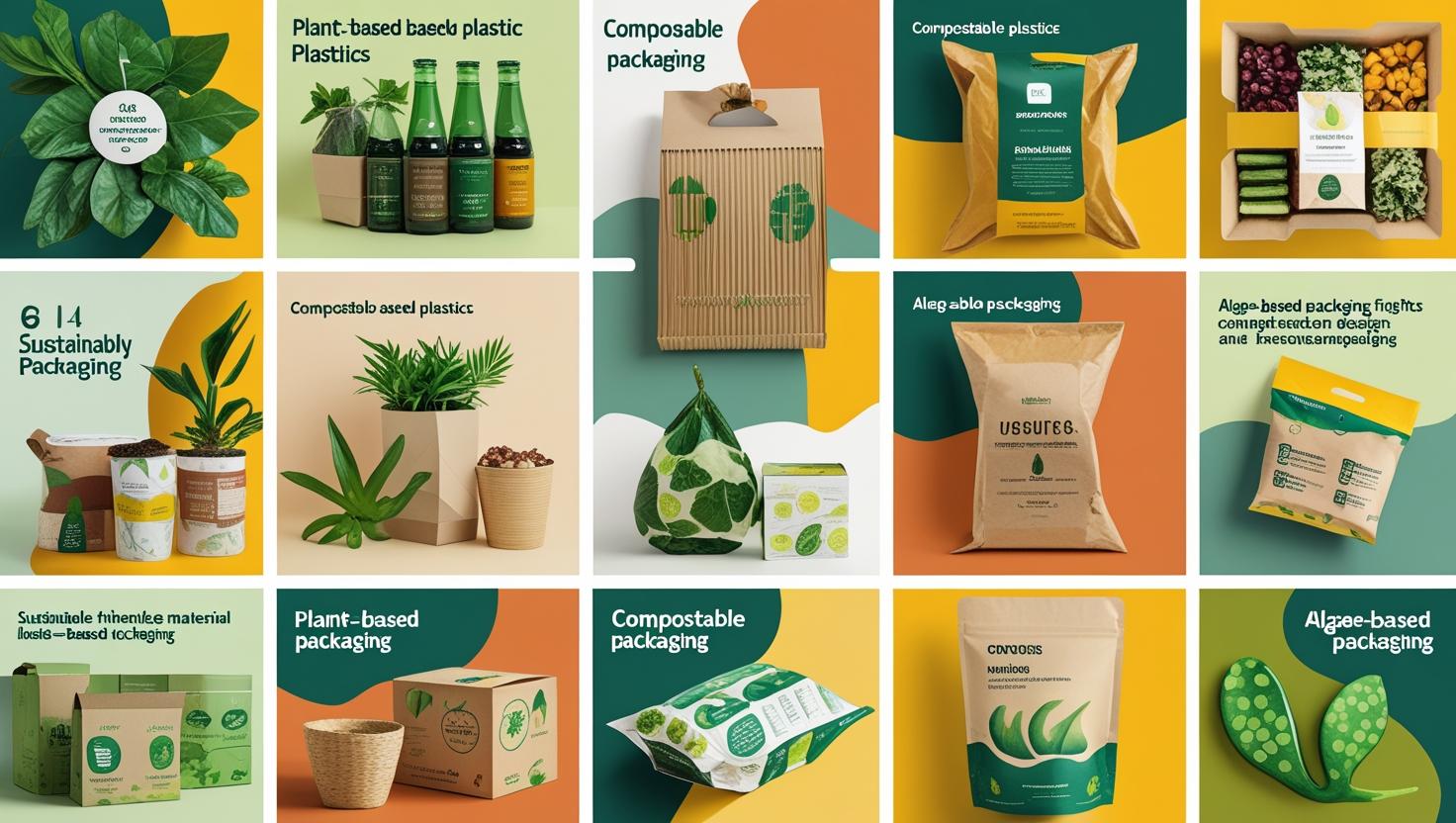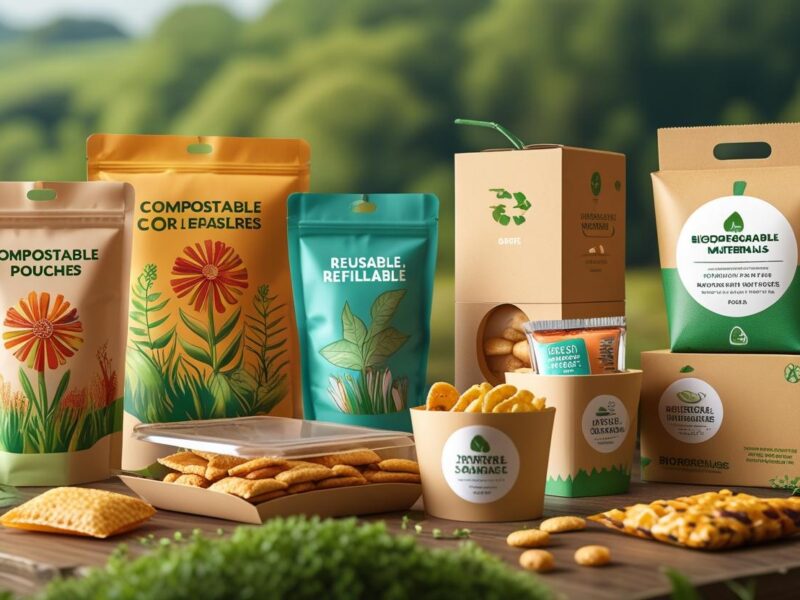Explore the latest trends in packaging sustainability, focusing on eco-friendly materials, innovative designs, and the future of sustainable packaging solutions.
Packaging Sustainability
In today’s environmentally conscious world, packaging sustainability has emerged as a crucial focal point for businesses, manufacturers, and consumers alike. As the world grapples with the growing impact of plastic waste, businesses are rethinking how their products are packaged, shifting towards more sustainable solutions. This article dives deep into the packaging sustainability trends that are transforming industries, from eco-friendly materials to new design innovations aimed at reducing environmental footprints.

The Need for Sustainable Packaging
Sustainable packaging is no longer a luxury but a necessity. Consumers are becoming more aware of their environmental impact, and many demand products that align with their values. Traditional packaging materials, such as plastic, are slowly being phased out in favor of biodegradable, recyclable, and reusable alternatives. This shift is not only driven by consumer demand but also by stricter environmental regulations and the global push to reduce carbon emissions.
Key Trends Shaping Packaging Sustainability
Rise of Biodegradable Materials
The demand for biodegradable materials is at an all-time high. Materials like plant-based plastics (PLA), compostable paper, and algae packaging are replacing conventional plastic in many industries. These materials break down more easily in natural environments, helping reduce long-term waste and contributing to a cleaner planet.
Emphasis on Recyclability and Circular Packaging
Recyclable packaging is a key player in the push for sustainability. Many companies are designing packaging with a circular economy in mind. This means creating packaging that can be reused or repurposed rather than ending up in landfills. Materials like paperboard, aluminum, and glass are prime examples of materials that support this model.
Circular packaging systems are gaining momentum, with brands like Coca-Cola and Unilever already leading the way with bottle and can designs that are easier to recycle.

Minimalistic and Smart Packaging Designs
Simplicity is gaining popularity in packaging design. Minimalistic designs not only reduce material use but also appeal to consumers who value sustainability. Smart packaging that uses less material but offers enhanced functionality is also on the rise. Companies are integrating technology, such as QR codes or NFC chips, to reduce the need for excessive printed information while offering customers valuable details digitally.
Shift to Reusable Packaging
A growing trend in the packaging industry is the shift towards reusable packaging. This trend is becoming particularly prominent in sectors like food delivery and personal care products. Brands are opting for refillable containers, bulk packaging, and subscription models that reduce the need for single-use containers. The use of glass jars, metal tins, and fabric pouches in reusable packaging is becoming more common, offering a more sustainable alternative to traditional packaging.
The Role of Innovations in Sustainable Packaging
Alternative Materials Innovations
Recent innovations in packaging materials have opened up new possibilities for sustainable packaging. Materials derived from mushrooms, seaweed, and rice husks are all being explored as viable packaging alternatives. These materials not only offer environmental benefits but are also cost-effective and biodegradable.
Mushroom packaging, for example, is gaining attention for its ability to replace polystyrene foam in product packaging. This material is both lightweight and durable, offering protection while being completely compostable.
Bioplastics and Their Growing Role
Bioplastics made from renewable resources such as corn starch, sugarcane, and even algae are increasingly replacing traditional petroleum-based plastics. These bioplastics are biodegradable and offer a promising solution to plastic pollution. Companies like Nestlé and Danone are already incorporating bioplastics in their product lines, signaling a significant shift towards more eco-friendly packaging solutions.
Consumer Preferences and Market Shifts
The push for sustainable packaging is heavily influenced by changing consumer attitudes. Studies show that consumers, especially millennials and Gen Z, prefer products with eco-friendly packaging. According to a recent survey by Nielsen, over 70% of consumers are willing to pay more for sustainable products. This has led to more brands adopting sustainable practices to remain competitive in the market.
Additionally, with governments and regulatory bodies implementing stricter laws on plastic waste, brands are pressured to align with sustainable practices or face fines. This regulatory shift is further accelerating the transition to sustainable packaging.

Packaging Sustainability and Corporate Responsibility
Companies Leading the Way
Many businesses are setting ambitious sustainability goals and making bold moves toward reducing their environmental impact. Patagonia, for instance, has incorporated recycled materials into its product packaging, contributing to the brand’s larger environmental mission. Unilever has also committed to reducing plastic waste by transitioning to 100% recyclable packaging by 2025.
Corporate responsibility is more than just a marketing tactic; it’s becoming a core value that companies must embody to stay relevant in today’s market. By embracing sustainable packaging, brands not only contribute to the planet’s well-being but also enhance their reputation as responsible corporate citizens.
How Sustainable Packaging Benefits the Environment
Reducing Waste and Pollution
Sustainable packaging plays a significant role in reducing single-use plastic pollution. With more companies moving toward compostable and recyclable materials, packaging waste can be diverted from landfills, leading to less environmental contamination. By choosing materials that can be reused or broken down into organic matter, businesses contribute to the reduction of toxic waste in oceans and landfills.
Lowering Carbon Footprint
In addition to reducing waste, sustainable packaging often involves materials that have a smaller carbon footprint compared to traditional plastics. For instance, bioplastics and other alternative materials require fewer resources to produce, reducing greenhouse gas emissions and contributing to a cleaner environment.
The Future of Sustainable Packaging
As technology and consumer awareness continue to evolve, so will the packaging industry. We can expect to see even more innovative materials that are not only sustainable but also highly functional. Packaging will become smarter, with innovations such as smart labels and tracking systems that monitor the life cycle of packaging from production to disposal.
Additionally, global collaboration will be key in driving change. By sharing best practices, investing in research, and scaling up production of sustainable materials, the packaging industry will play a critical role in tackling global challenges like climate change and pollution.

FAQs About Packaging Sustainability
What is the most sustainable packaging material?
The most sustainable packaging material depends on its use, but biodegradable plastics, recycled materials, and glass are some of the best options for reducing environmental impact.
How can businesses transition to sustainable packaging?
Businesses can transition by opting for recyclable, biodegradable, or reusable materials, minimizing packaging waste, and adopting eco-friendly production processes.
Why is sustainable packaging important for the environment?
Sustainable packaging helps reduce waste, lower carbon emissions, and minimize pollution, contributing to the long-term health of the planet.
Is biodegradable packaging better than plastic?
Yes, biodegradable packaging decomposes naturally, reducing the long-term environmental impact of plastic, which can take centuries to break down.
Can I recycle all types of packaging?
Not all packaging is recyclable. It’s important to check local recycling guidelines and ensure that packaging materials, such as plastics and aluminum, are accepted in your area.
The Shift Toward Sustainable Packaging
The packaging sustainability trend is more than just a passing phase; it’s a reflection of the growing global commitment to environmental preservation. As consumers demand more eco-friendly solutions and businesses rise to meet these expectations, we are seeing a profound transformation in the packaging industry. The trends outlined above demonstrate that a sustainable future is possible — one where businesses and consumers work hand-in-hand to reduce waste, conserve resources, and protect the environment.
By staying ahead of these trends and embracing sustainable packaging, companies not only contribute to a greener future but also build lasting consumer trust and loyalty. As we look to the future, packaging sustainability will continue to be a central pillar in shaping the products we use and the world we live in.


